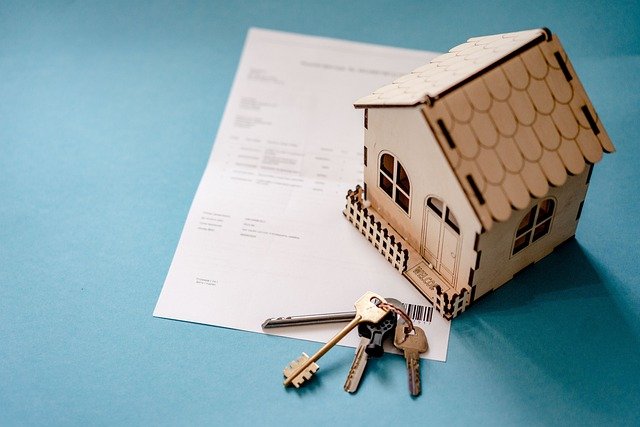Rent-to-Own Homes: Practical Guide to Lease-Option Buying
Explore rent-to-own (lease-option) homes as an alternative route to homeownership. This in-depth guide explains how rent-to-own works, the benefits and pitfalls for buyers and sellers, what to include in contracts, and how financing changes over the lease period. Learn how to find listings, protect your interests, and use rent credits, even with imperfect credit or limited savings.

Rent-to-own (often called lease-option) agreements let prospective buyers rent a house with the right to purchase it later at a price set in the contract. Typically lasting one to three years, these arrangements blend renting and buying: tenants live in the home while building toward ownership. If market values rise during the lease, the buyer can lock in a purchase price that may prove advantageous when the option is exercised.
Why Consider Rent to Own?
Rent-to-own can be a strategic choice for people who want to become homeowners but aren’t ready for a traditional mortgage. It offers a path to accumulate down payment credits and improve credit profiles while living in the property you plan to buy. For buyers with limited savings, recent credit setbacks, or unstable income, the lease period provides time to strengthen finances and qualify for a loan.
Sellers also gain from rent-to-own deals. They receive steady rental income and a potential off-market sale in the future. Properties under lease-option often receive better care because tenants see the house as a future investment, which can reduce maintenance headaches and turnover costs.
Potential Drawbacks to Keep in Mind
Rent-to-own arrangements are not risk-free. Option fees and rent credits are commonly nonrefundable; if a tenant chooses not to buy, those sums may be forfeited. Likewise, if the housing market softens, a buyer might be locked into paying more than current market value. From the seller’s perspective, there’s the risk that the tenant won’t complete the purchase, leaving the property off the market and potentially needing re-listing later.
Clear, thorough contracts and legal counsel can help both parties anticipate these outcomes. Understanding contingencies, defaults, and termination clauses is essential before signing.
How to Locate Rent-to-Own Properties
Finding lease-option homes often requires extra legwork compared with traditional listings. Start with real estate websites—many now include filters for rent-to-own or lease-option properties. Local real estate agents who specialize in investor-owned or distressed properties can be valuable allies, as can classified ads and community bulletin boards.
Another tactic is to target homes that have been on the market for a long time. Owners of lingering listings might be open to a creative arrangement like rent-to-own, especially in slower markets or during economic downturns. Networking in local investor groups or posting targeted inquiries may also uncover off-market opportunities.
What Every Rent-to-Own Contract Should Cover
A solid lease-option agreement protects both parties. Key elements to include are:
- Purchase price or a clear method for calculating the future price (fixed, formula, or appraisal-based)
- Length of the lease and the option period (how long the tenant has to exercise the purchase)
- Monthly rent and the portion, if any, credited toward the purchase or down payment
- Option fee amount and whether it’s refundable
- Who is responsible for maintenance, repairs, and property taxes during the lease
- Terms for terminating the agreement and penalties for breach
- What happens if the tenant declines to buy or fails to qualify for financing
Both buyer and seller should consult experienced real estate attorneys to ensure terms are enforceable and to minimize ambiguities.
Financing: How It Differs from a Traditional Mortgage
During the lease period, tenant-buyers usually do not need mortgage approval, but they should use this window to improve credit scores, reduce debt, and accumulate any required down payment. Rent credits earned under the lease can often be applied to the down payment or closing costs when the option is exercised.
When the option period ends and the buyer decides to proceed, a traditional mortgage will typically be needed unless the buyer can pay cash. Mortgage rates and underwriting standards may change over time, so early communication with a lender is wise to understand current qualification criteria and what steps are necessary to secure financing.
| Aspect | Traditional Mortgage | Rent to Own |
|---|---|---|
| Down Payment | Required upfront | Built over time via rent credits or option fee |
| Credit Score | Usually needs to be good to excellent | Can be lower; time provided to improve |
| Loan Approval | Needed before purchase | Can be obtained during lease period |
| Interest Rates | Locked at purchase | Locked when purchase occurs; may differ from market |
| Property Value | Assessed at purchase | Price often agreed in advance; may vary from future market |
Prices, rates, or cost estimates mentioned in this article are based on the latest available information but may change over time. Independent research is advised before making financial decisions.
Practical Tips Before Signing
- Get everything in writing. Verbal promises are not enough. - Have an attorney review the contract to protect your interests. - Verify how rent credits and option fees are documented and applied. - Confirm who covers routine maintenance and unexpected repairs. - Talk with a lender early to understand your likely mortgage terms and what to do during the lease to qualify.
Final Considerations
Rent-to-own deals can be an effective bridge for aspiring homeowners who need time to prepare for a mortgage. They offer flexibility and potential financial advantages but come with trade-offs and responsibilities. By researching listings, negotiating transparent terms, and consulting legal and lending professionals, both buyers and sellers can structure lease-option agreements that align with their long-term goals and financial realities.





